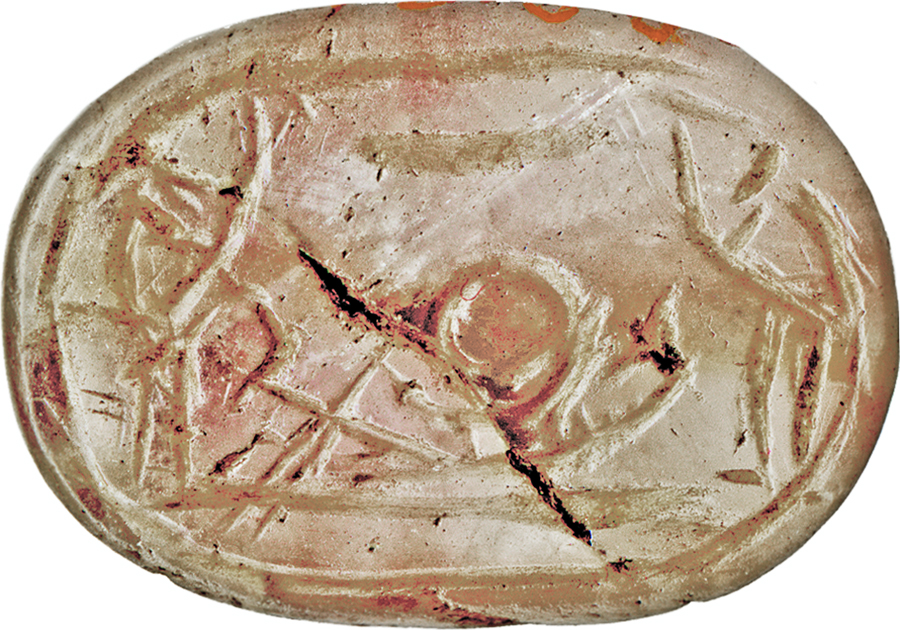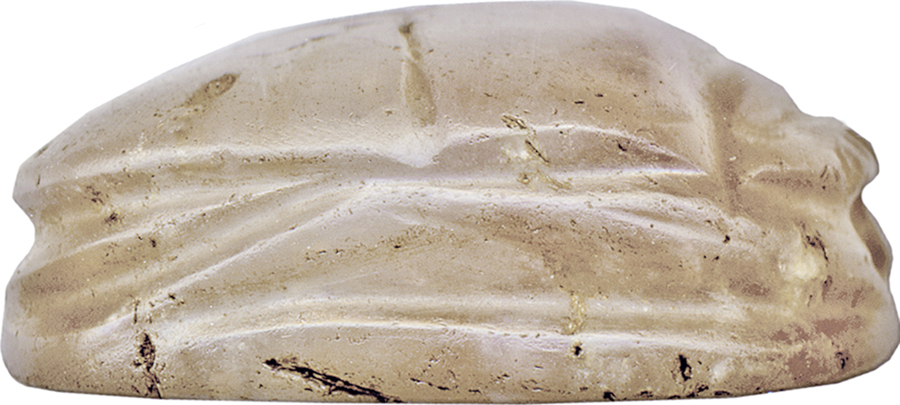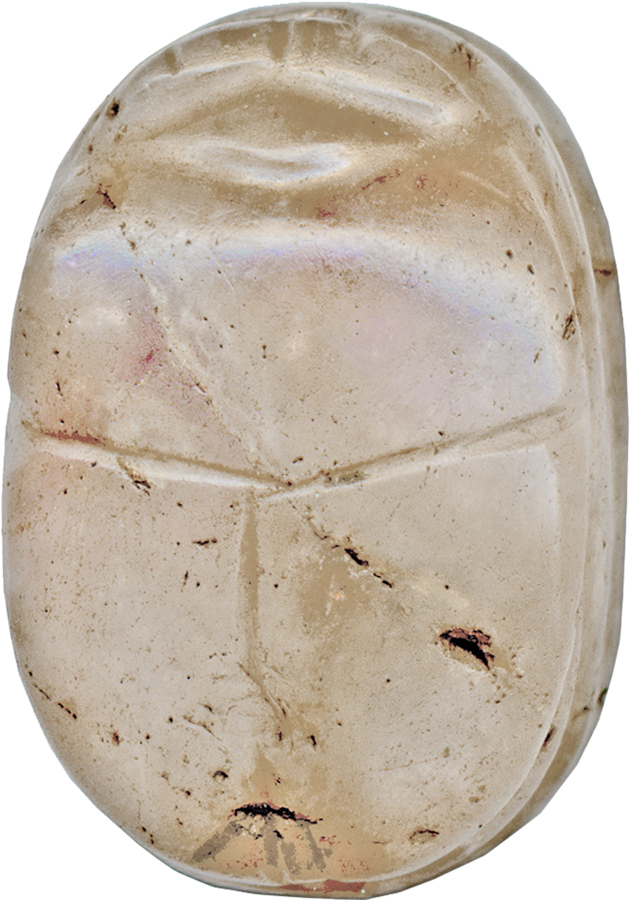Scarab with Adoration Scene with Sun Barque and Baboons
(Ancient Egypt and Nubia )
This amethyst scarab has a high back with incised designs. The bottom is carved with an adoration scene with a sun barque and baboons. The bottom design is very rough and incised with a few thick lines; the borderline is not consistent and some parts are missing, and the layout is not very well balanced. The piece is simply made.
This scarab functioned as a funerary amulet, and was originally mounted or threaded. The amulet should guarantee the renewal of the deceased in the afterlife by the appearance of the sun god. The use of the gemstone material amethyst, with its very light reddish coloration (color of the sun rise) should intensify the magic power of the amulet.
There are similar motifs with divine barque and flanking baboons in adoration gesture on finger rings from the tomb of Tutankhamun. Amethyst was a popular material for Egyptian scarabs, but most of them are without bottom designs.
Provenance
Provenance (from the French provenir, 'to come from/forth') is the chronology of the ownership, custody, or location of a historical object. Learn more about provenance at the Walters.
Henry Walters, Baltimore, [date and mode of acquisition unknown]; Walters Art Museum, 1931, by bequest.
Geographies
Egypt (Place of Origin)
Measurements
H: 3/8 x W: 9/16 x L: 13/16 in. (0.9 x 1.4 x 2 cm)
Credit Line
Acquired by Henry Walters
Location in Museum
Not on view
Accession Number
In libraries, galleries, museums, and archives, an accession number is a unique identifier assigned to each object in the collection.
In libraries, galleries, museums, and archives, an accession number is a unique identifier assigned to each object in the collection.
42.396








